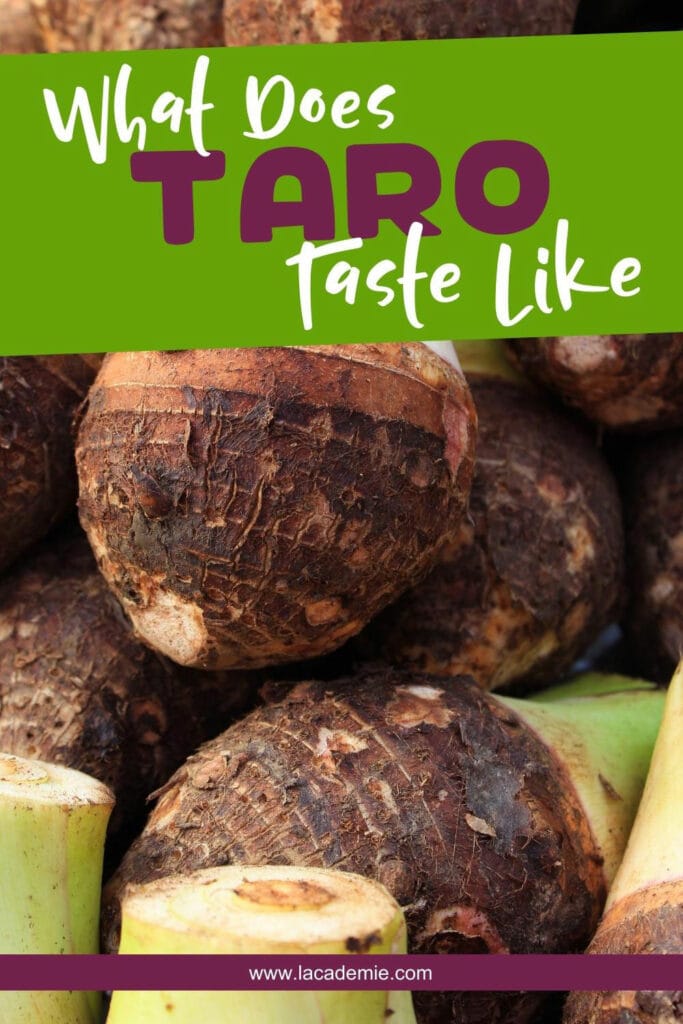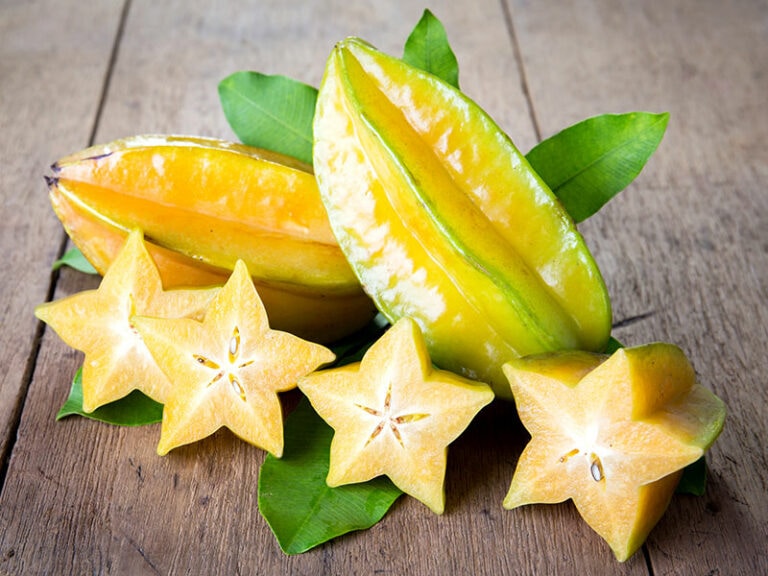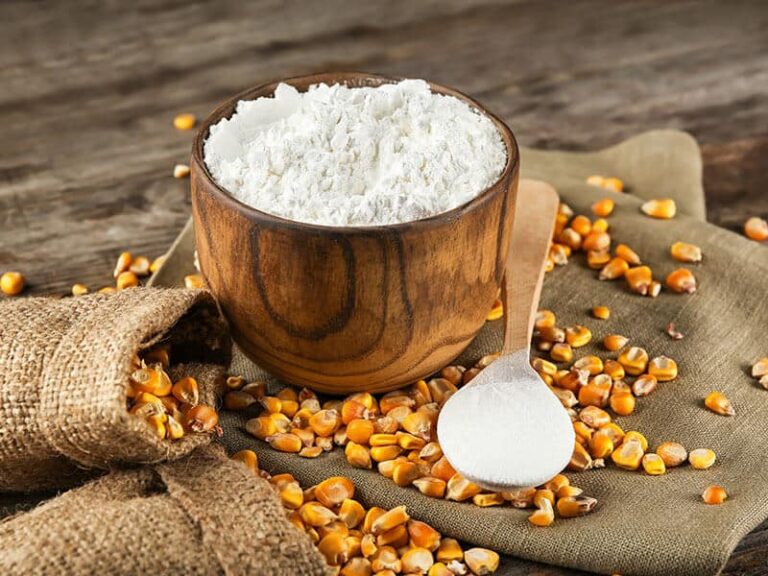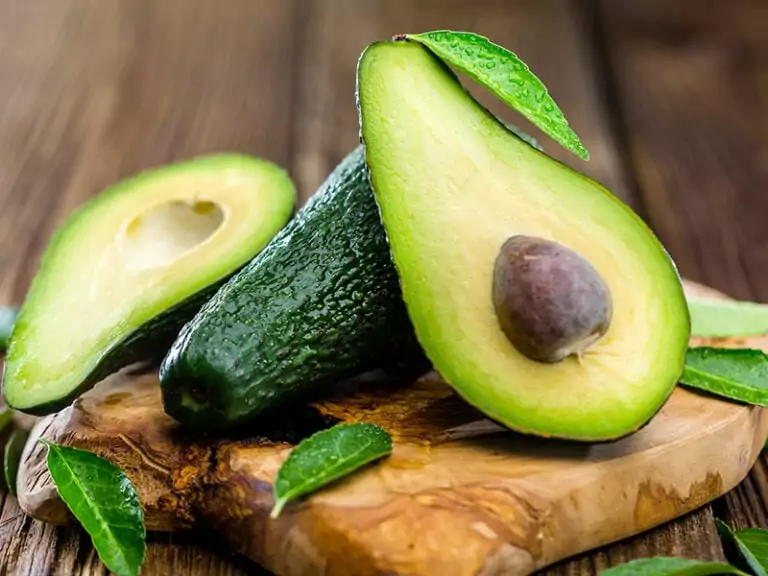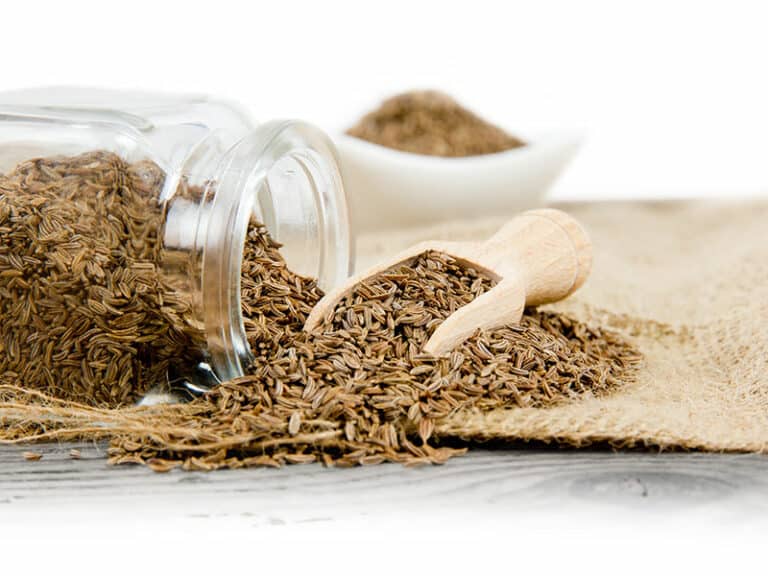What does taro taste like? Taro is presented in various savory dishes and drink recipes, making them more fulfilling. However, do you know what exactly is its taste and why it is so versatile? Taro is an interesting vegetable. I bet that you will find it interesting after knowing its taste.
Given how much I love taro, I want to share with you everything about it so that you will love it as much as I do. In this article, besides taro’s taste, I will also provide you with a lot of practical information about how to store and cook taro, which will better help.
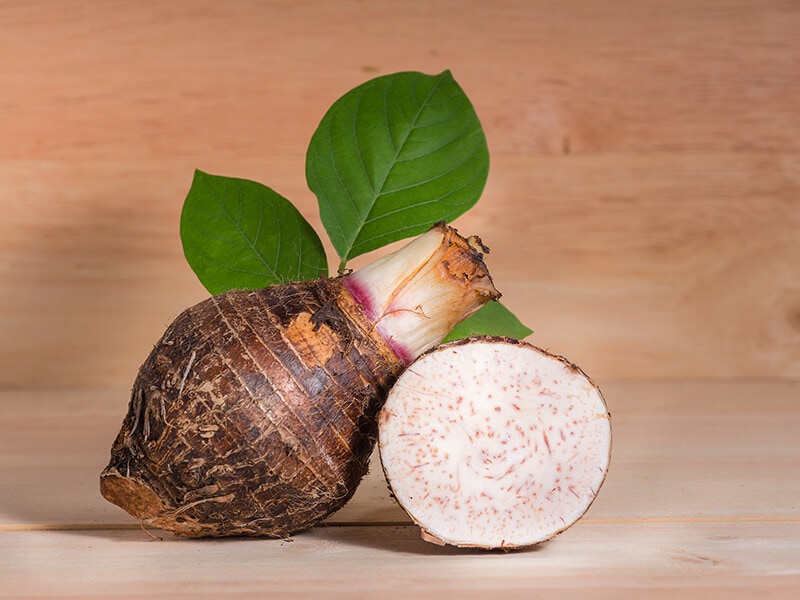
A Concise Introduction To Taro
Before going any further, let’s get some background information about taro. This information will help you to understand taro better.
Origin
Taro was first grown in Asia and is considered a very ancient cultivar. But the exact country is unknown. It can possibly be India or Malaysia. Nowadays, taro is planted in the tropical and subtropical parts of the world, such as America, New Zealand.
You will often hear people call taro by different names, including Colocasia esculenta (scientific name), dasheen, cocoyam, and eddo. (1)
Characteristics
Many people are confused about whether taro is a fruit or vegetable because it is used in making drinks as well as savory dishes. Technically speaking, it is a kind of vegetable since it is the edible root of the plant rather than the fruit.
Taro’s appearance is quite remarkable. Let’s first talk about the corm. It has brown-gray color and rough, scaly skin. It is a little bit hairy. However, the flesh inside has a completely different texture. It is smooth, creamy, has a beautiful white color plus some purple dots.
Taro flesh color ranges from white, pink, to purple, depending on the ripeness and the varieties.
Taro has nearly 100 remaining varieties. Each variety slightly differs in shape, size, texture, and growing condition. Taro plants can grow on land or in the water.
Everything To Say About Taro’s Taste
It’s time to get to the main point of this article. I will tell you everything about taro’s taste, including the taste when it is cooked in various ways.
Original Taste
Basically, taro tastes sweet, nutty, creamy, and starchy. However, it is the taste when it is cooked. Raw taro is toxic and inedible. Taro texture is often described to be similar to that of sweet potatoes. When you boil or steam taro, it will be more tender, yet still firm.
Taro’s taste is stronger than other root vegetables, yet it is very versatile. You can use taro in a lot of ways, from making sweet desserts to savory dishes, and everything in between.
The sweet and vanilla-like flavor make it suitable for making sweet desserts such as taro milk tea. Hawaiian people also have several desserts using taro as the main ingredient. At the same time, taro also matches well with savory dishes thanks to its nutty taste.
Are you curious about what taro smells like? Well, in general, taro is fragrant. But its smell varies depending on how it is cooked. For example, taro milk tea has a slightly vanilla scent while roasted taro smells like parsnip and sweet potatoes.
Taro’s Taste In Savory Dishes
There are just a few vegetables that can be cooked in various ways as taro can. How amazing it is! Read on and choose a way to cook taro for today’s meals.
Boiling And Steaming
These are among the most common methods to cook taro. Boiling taro is also a preprocessing stage before making sweet desserts, such as milk tea and cakes. Boiled taro has its original taste and texture, which is sweet, soft, and creamy.
Its taste resembles boiled potatoes, yet it has a more overpowering and nutty flavor. Boiled taro can absorb the flavor of other ingredients, making it a suitable candidate for one of these well-known Malaysian desserts and snacks, Bubur Cha Cha.
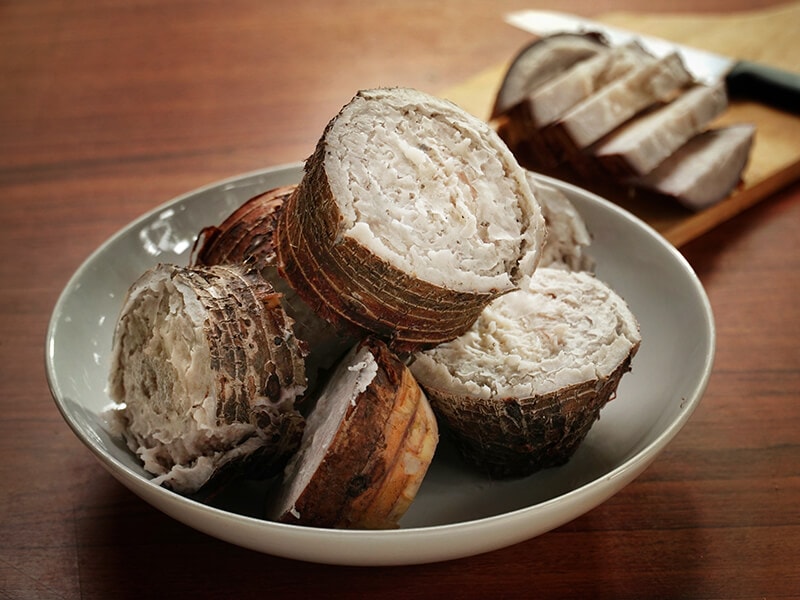
Roasting And Baking
Taro can be roasted and baked, turning to golden brown eventually. It is often seasoned before roasting, which makes it taste both sweet and salty. Its outside texture also becomes more crispy due to being heated. The inside is still starchy and soft.
Roasted taro tastes pretty much like roasted parsnip, which is slightly dry and chewy.
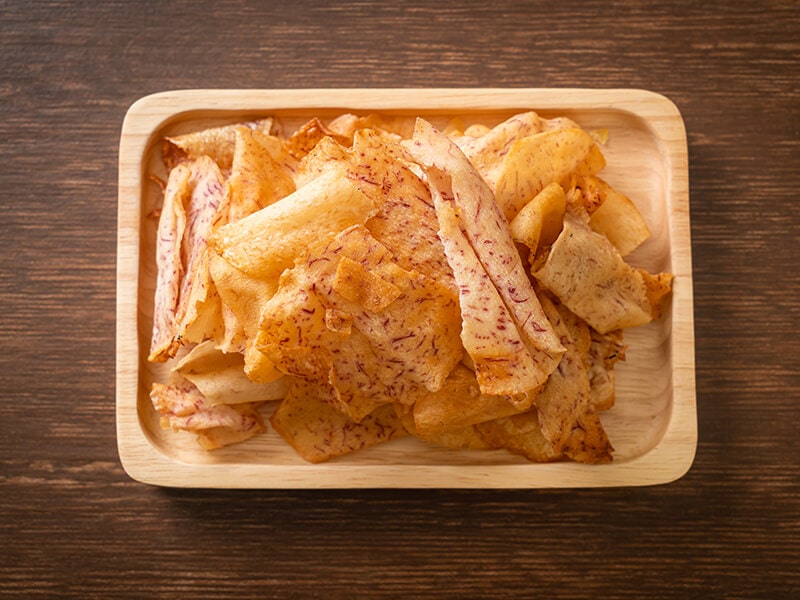
Frying
You can pan-fry and deep-fry taro to make fritters and chips. Deep-fried taro has a crispy and slightly oily coat, but it is crisper than roasted taro. It also has a sweet and salty taste on the inside and outside, respectively, which is perfect to serve as an appetizer.
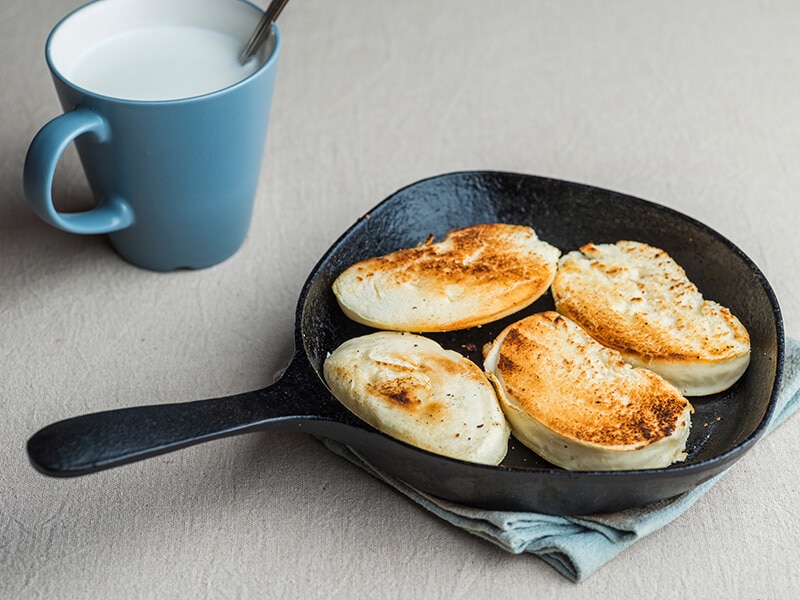
Do you want to make fried taro dumplings to serve your family next weekend? Watch this video to know:
Stir-Frying
When you stir-fry taro, it tastes much like fried taro but the exterior is less crispy because it is cooked with less oil. The interior is soft and sweet as always.
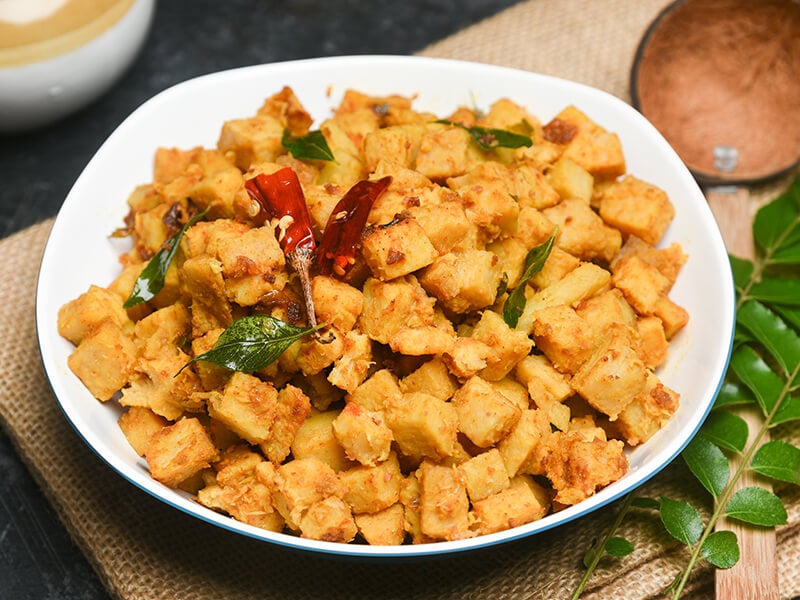
Stewing And Braising
Stewed and braised taro is more tender because they are heated longer. They can somehow retain the original flavor, yet the outer layer absorbs the flavor of other ingredients.
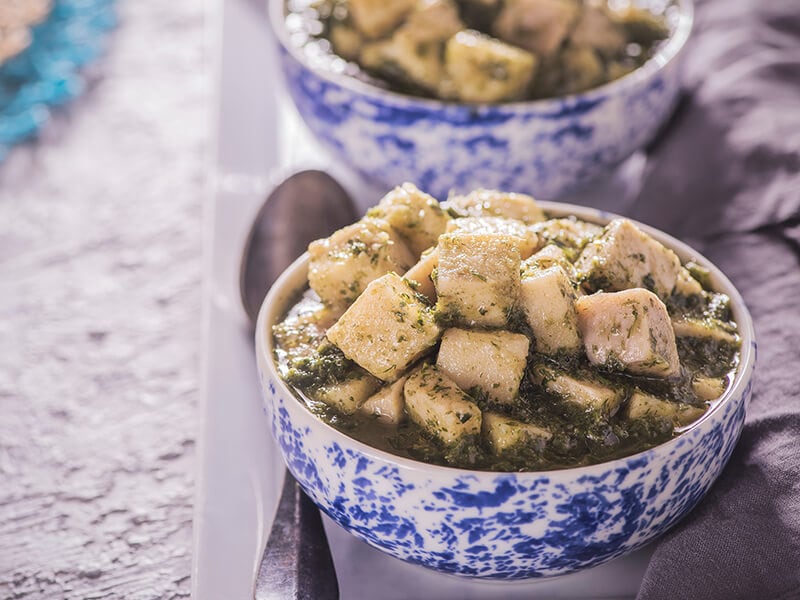
Fermenting
Taro can be fermented to make poi, a famous condiment in Hawaii. Taro is first boiled and mashed. Then it is fermented to create an acidic flavor. Poi has a creamy texture and tastes sweet and tangy. It is often used as a side dish to serve alongside savory dishes.
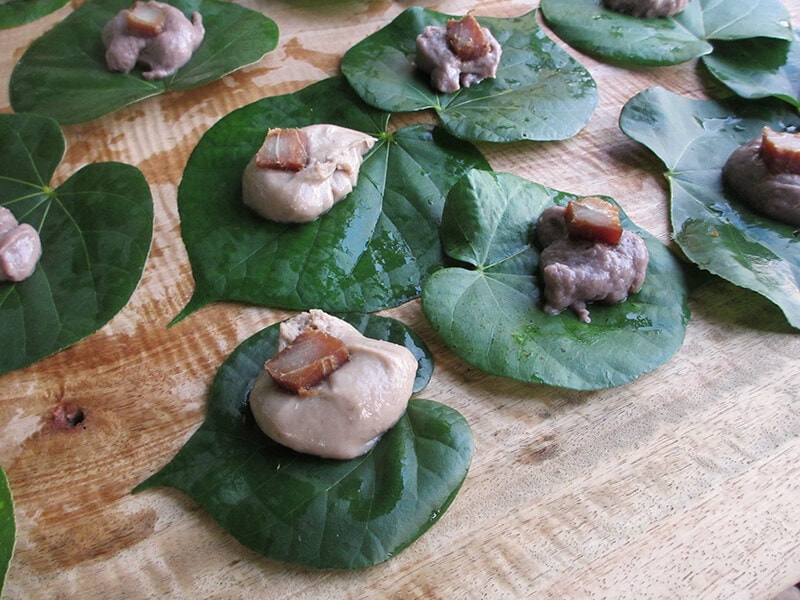
Making Taro Cake
Taro cake is a traditional dish in Cantonese. Taro is mixed with salt, soy sauce, and other ingredients. Then the mixture is steamed to perfection. The cake has a dense and soft texture. It is not only naturally sweet but also a little salty as well.
And do you know taro appears in several Mexican sweet treats as well? You’ll find this ingredient mostly in conchas, a Mexican sweet bread version.
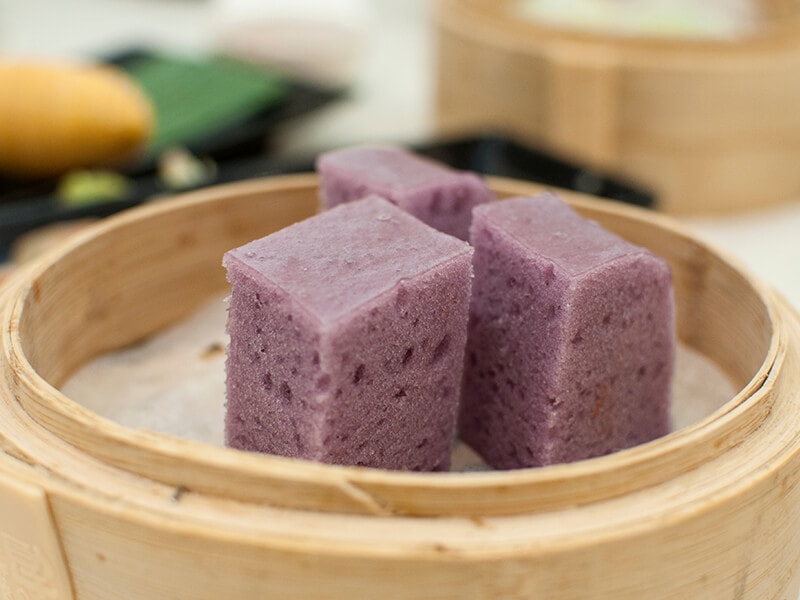
Taro’s Taste In Sweet Desserts
Since taro is so versatile, it is widely used to make sweet desserts. Here are 7 desserts that are made from taro that you are certainly curious about their flavor.
Taro Milk Tea
Taro milk tea is a well-known sweet dessert. Fresh taro or taro powder is combined with milk and tea leaves. It is creamy, sweet, and has a hint of bitterness due to the tea. Taro milk tea often has bubbles and cream.
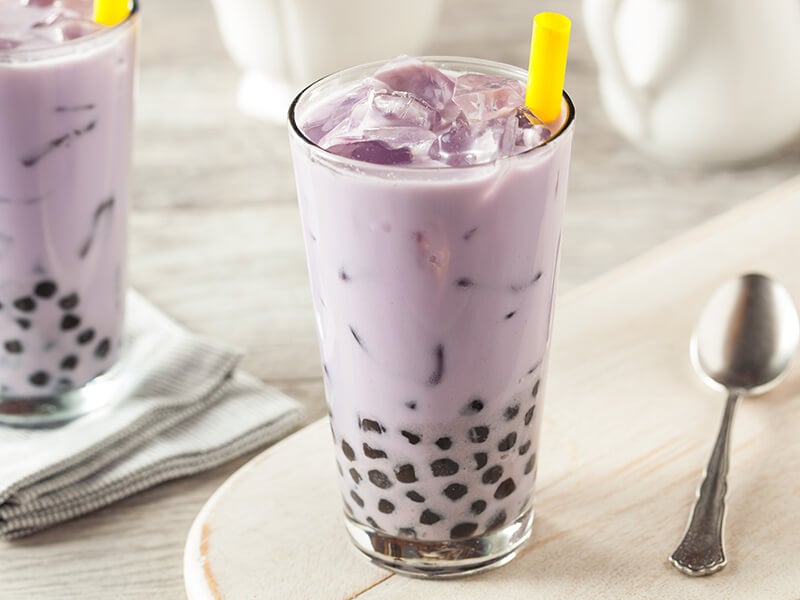
Taro Pudding
When taro is made into pudding, it is mashed, then added with milk, sugar, and cornstarch to thicken the mixture. So taro pudding has a sweet taste with a semi-solid and mouth-melting texture.
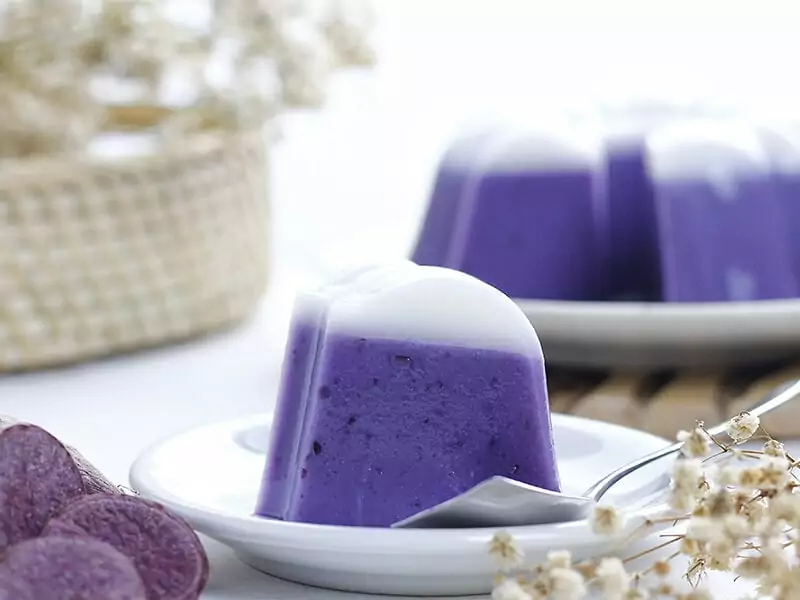
Taro Frappe
Taro frappe has a smooth and creamy texture with a rich and sweet taste. It is quite thicker than taro milk tea but is thinner than taro smoothie.
If you have tried a biscuit milkshake, taro frappe’s flavor is similar to it. Besides ice blended taro, it is also decorated with a whipped cream flower on the top.
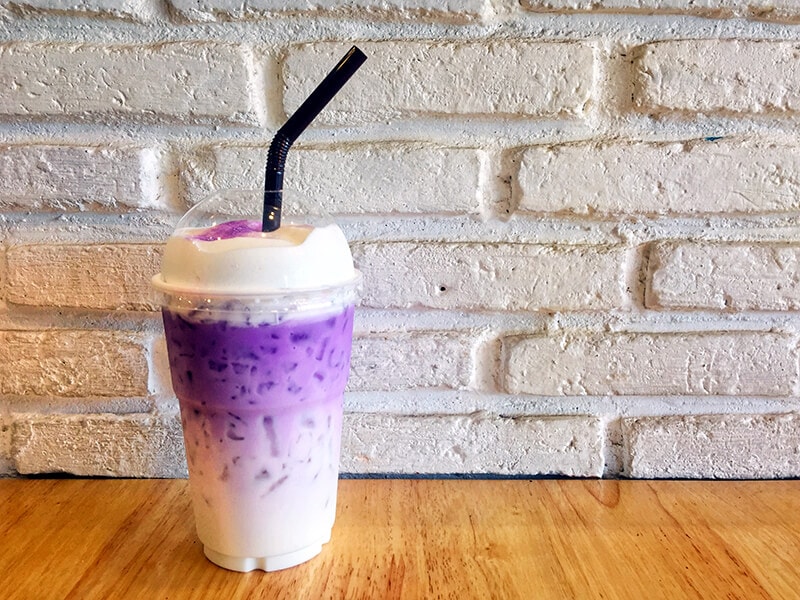
Taro Ice Cream
Have you ever tasted taro ice cream? It is a very common dessert. The ice cream retains the sweet and nutty flavor of taro. Yet its texture is the same as ordinary ice cream, which is smooth and creamy. It has a vanilla-like and nutty scent that is quite similar to cookies.
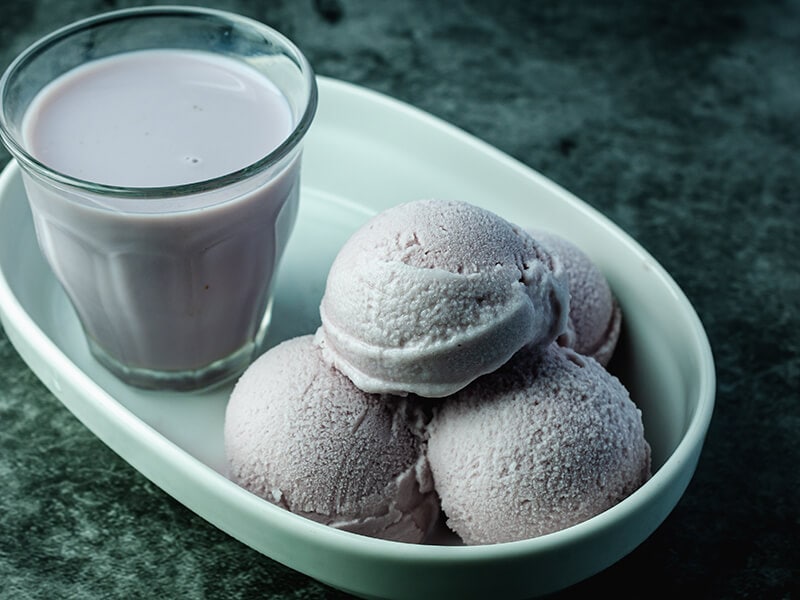
Taro Mochi
This Japanese traditional dessert has a special texture. While it tastes gently sweet and nutty like normal taro, the dough is less sweet than the filling. Regarding texture, it is chewy on the outside and mouth-melting texture on the inside.
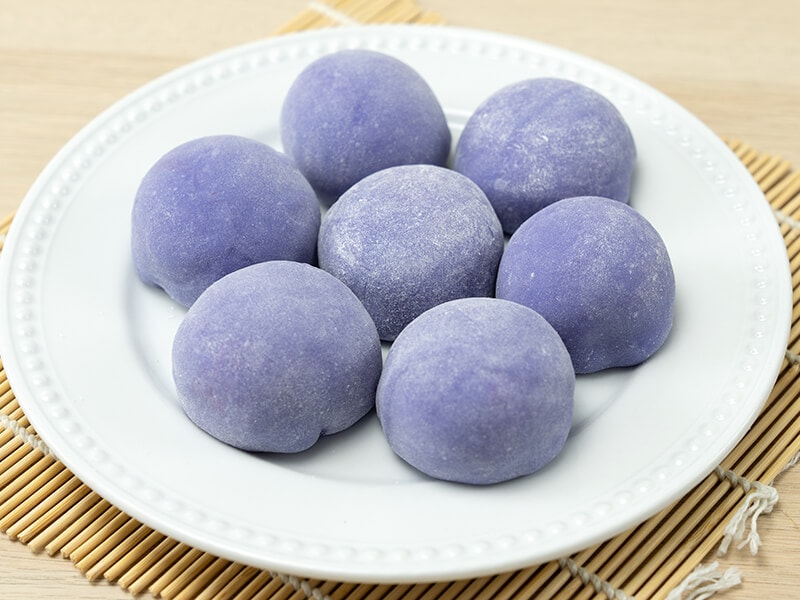
Taro Ball
Taro balls are a popular dessert in Taiiwanese cuisine. It is made by mashing taro, mixing it with potato flour, and boiling it. Taro balls have the original mildly sweet taste of taro. Their textures are chewy and glossy.
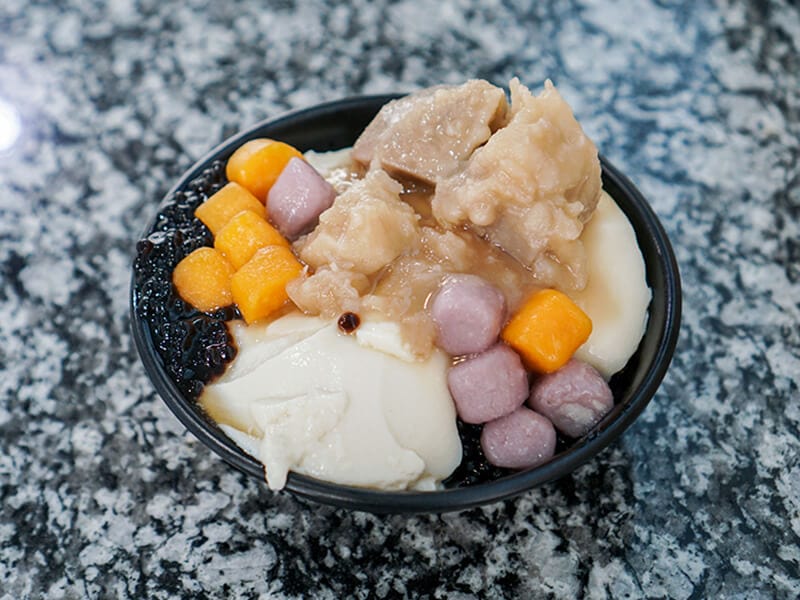
Taro Smoothie
Taro smoothie is an ideal drink in summer. It is fresh, cool, smooth, sweet, creamy, and fragrant. Sometimes taro powder is used instead of fresh taro. You can blend boiled taro with coconut milk, sugar, and ice. That is undoubtedly an unforgettable flavor you have ever tried.
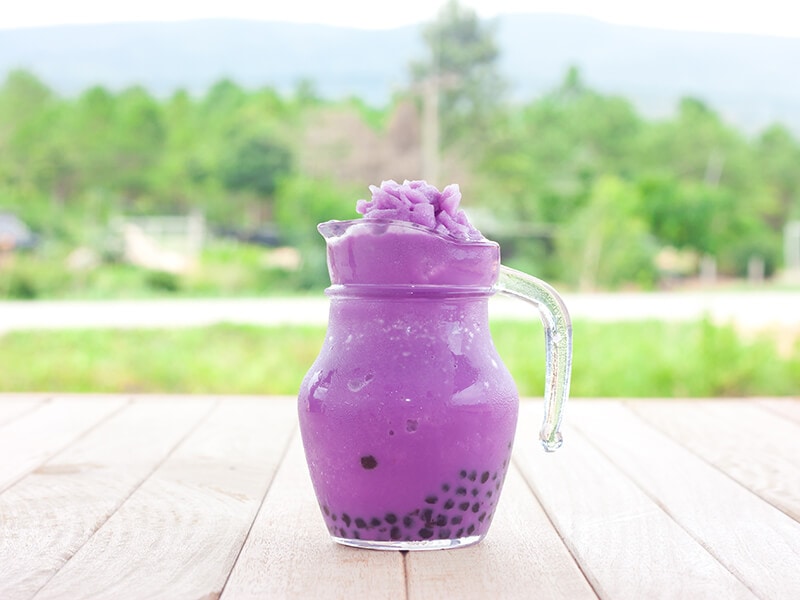
How To Store Taro Properly: The Ultimate Beginners’ Guide
Storing taro can be a trouble for beginners. But once you know the appropriate places and methods to store it. Storing taro will become a simple and effortless task. There are two environments that you can store. They are the pantry and freezer.
Do you wonder whether you can store taro in the fridge? The answer is a big no as the low temperature in the refrigerator will make you spend a long time cooking it.
Pantry
You can store taro at room temperature for 2-3 days. Put taro in a paper bag and leave it in a dark and cool place. If you have a root cellar, use it to store taro. The root cellar is its favorite storage environment. Notably, when the weather is cool, taro can be kept for 7 days.
Taro does not like heat and sunlight. It will spoil quickly when interacting with these environments. In addition, keep it in a well-ventilated place. Taro will last longer.
Taro has a relatively short shelf life. Even though it is safe to keep it for 2-3 days, I recommend that you eat it as soon as possible to be able to enjoy its peak quality.
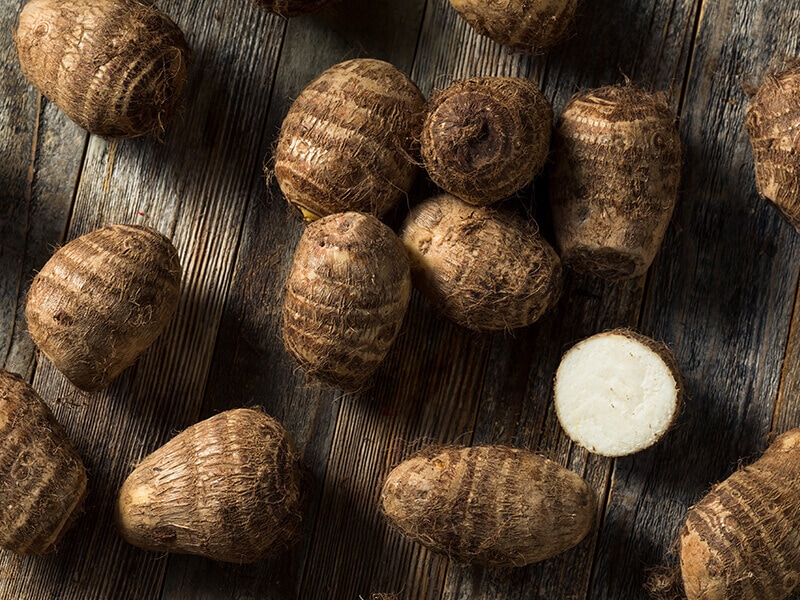
Freezer
Once you freeze taro, you can keep it for 1-2 months. The procedure takes some time, but it is not difficult at all.
Step 1: Peel Taro
First, you have to peel the taro with a knife. Since taro is sticky to the touch and can cause itching, you should wear gloves and immerse it in the water while peeling. Do not touch your eyes at the same time. Another way is to apply a layer of oil to your hand before peeling it.
Step 2: Cut And Boil Taro
You should also cut taro into long and thin sticks and boil them for 5 minutes. Right after that, put them into a bowl of ice until they are completely cool.
Step 3: Freeze Taro
Finally, drain the taro sticks, pour them into a freezer bag, and put them in the freezer. For best quality, eat it as soon as possible
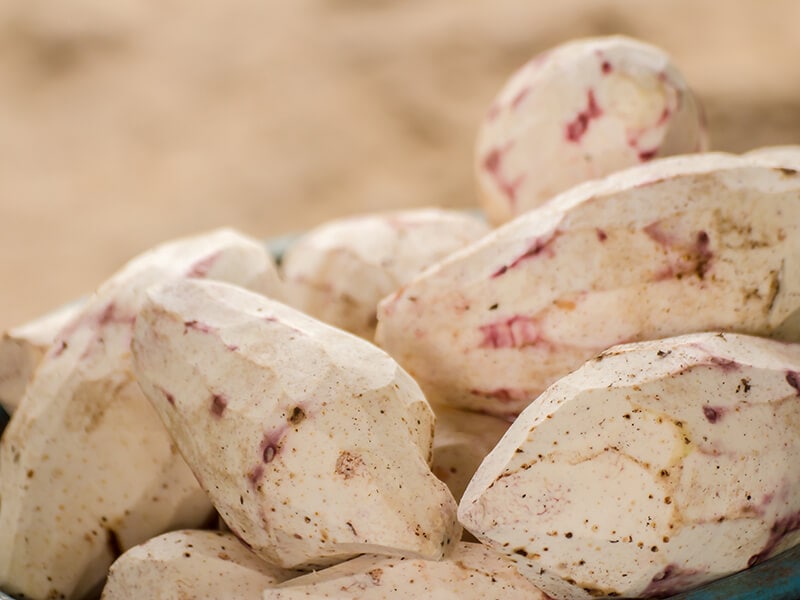
How To Tell If Taro Is Bad
Tato spoils much faster than other vegetables, especially when it is not stored properly. Here are the signs of spoiled taro. You should check the taro carefully before eating it.
- Texture: Fresh taro is always heavy and firm. If it is soft, then it has probably been left at room temperature for too long. You should not eat it.
- Appearance: Also, look for bruises and dark spots on the skin. Once you see any of these, the taro is not edible anymore. Mold is the most serious spoilage sign. You must throw it away when you see any mold on its skin.
- Color Of Flesh: The next thing to check is its flesh. Taro has white or pink flesh. If it turns brown, then it is definitely spoiled. When you see a dark area on the flesh, just cut that part. The rest is still edible, given that other symptoms are absent.
Why Should You Eat Taro?
Taro has some impressive health benefits. As such, you have no reason not to try this healthy and delicious vegetable.
A vegetable cannot be what it is without fiber. And taro is no exception. Its high fiber and resistant starch content are proven to be able to control blood sugar levels, decrease the risk of developing heart diseases, and help you lose weight. (2)
Taro is also a good source of vitamins and minerals. It is rich in vitamin C, E, potassium, and manganese. Furthermore, taro also contains quercetin, an antioxidant that may help to prevent cancers.
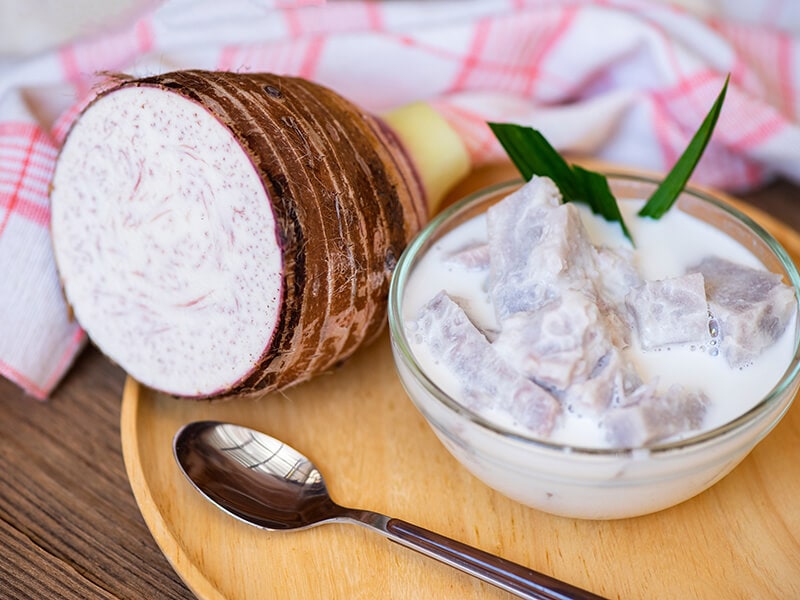
5 Taro Recipes For You To Get The Best Taste Of Taro
It’s time to get to some practical stuff. Here are 5 best recipes that make taro tastes even more delicious, including savory dishes, appetizers, and sweet desserts. Don’t miss them.
1. Taro With Coconut Milk
Taro is a wonderful ingredient to make sweet desserts. And coconut milk pairs well with it. Taro and coconut milk is a mouth-watering sweet dish belonging to Thai cuisine. I promise you that you will be surprised by how tasty and comforting it is.
This dish is served both warm and cold. Warm taro with coconut milk is ideal for enjoying in winter. For a hot summer day, the cold version is the best.
This classic Thai dessert is easier to make than you think. Watch this video to know:
2. Crispy Taro Fritters
Taro itself is not crispy. However, you can enjoy both a crispy and creamy taste when you taste crispy taro fritters. Every fritter is coated with cornflour creating a crispy golden brown layer on the outside with a smooth and sweet flavor on the inside.
If you don’t like deep frying because of the high amount of fat and calories. You can pan fry it instead. Crispy taro fritters are best enjoyed with dipping sauce. A balanced combination of soy sauce and chili sauce would be perfect.
3. Taro Milk Tea
Have you ever heard of taro milk tea? If you haven’t, it is my honor to introduce it to you. Taro milk tea is a healthy milk tea that is made from only taro and milk. It has a distinctive sweet taste and creamy texture, plus a gorgeous purplish color.
Milk tea tastes best with bubbles, so don’t forget to add some to enjoy the chewy texture as well. You can make hot and cold taro milk tea, depending on your personal preference. Both taste amazing.
Learn more about making delicious taro milk tea right now! Watch this video:
4. Taro Bun
Everything is delicious when it comes to taro. And taro bun is my favorite breakfast. The most important element of this dish is taro paste, which is made from taro root, coconut oil, and condensed milk, which is creamy and lightly sweet.
The dough, made from bao flour, is soft, fluffy, and airy. You can not imagine how tasty it is until you taste it. Make sure you eat them while they are still warm. That is when they taste best.
5. Taro Soup
Let’s go back to savory dishes. The creamy texture of taro makes it a perfect ingredient for making soup. Taro in soup is not as sweet as it is in the above sweet dessert, but the soup retains its slightly nutty sweet and starchy flavor.
This soup is a part of Korean cuisine. Therefore, it is best served with white rice, kimchi, and other savory dishes. Make this delicate dish, and you will feel like taking a tour to Korea and back.
Don’t hesitate to cook this Korean-style taro soup today:
FAQs
Never miss anything about taro. In this section, you will find the questions that are most asked by taro lovers. They will also be beneficial to you as well. So read along.
Taro Will Not Disappoint You!
What does taro taste like? It has a special sweet and nutty flavor. After you already know how amazing it tastes and how many delicious dishes you can make with it, are you still hesitating? It’s time to rush to the supermarket and find the Asian section to pick the freshest taro now!
Have you ever tried taro? What do you think about its taste? What are your favorite taro recipes? Don’t forget to share your ideas with me!
References
- Anon, 2021. Taro. Wikipedia. Available at: https://en.wikipedia.org/wiki/Taro
- Julson, E., 2018. 7 surprising benefits of Taro Root. Healthline. Available at: https://www.healthline.com/nutrition/taro-root-benefits#TOC_TITLE_HDR_5
